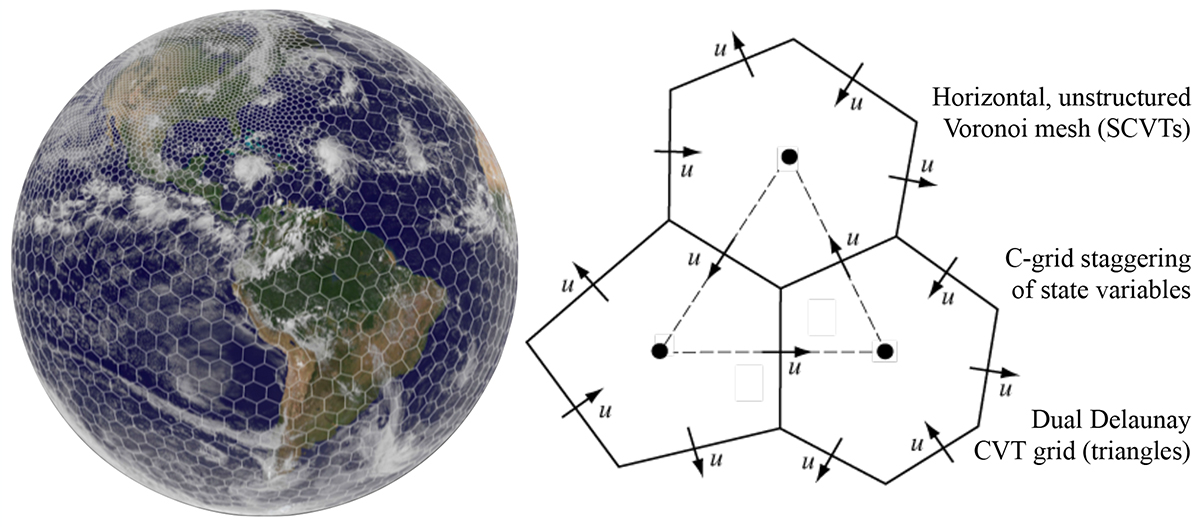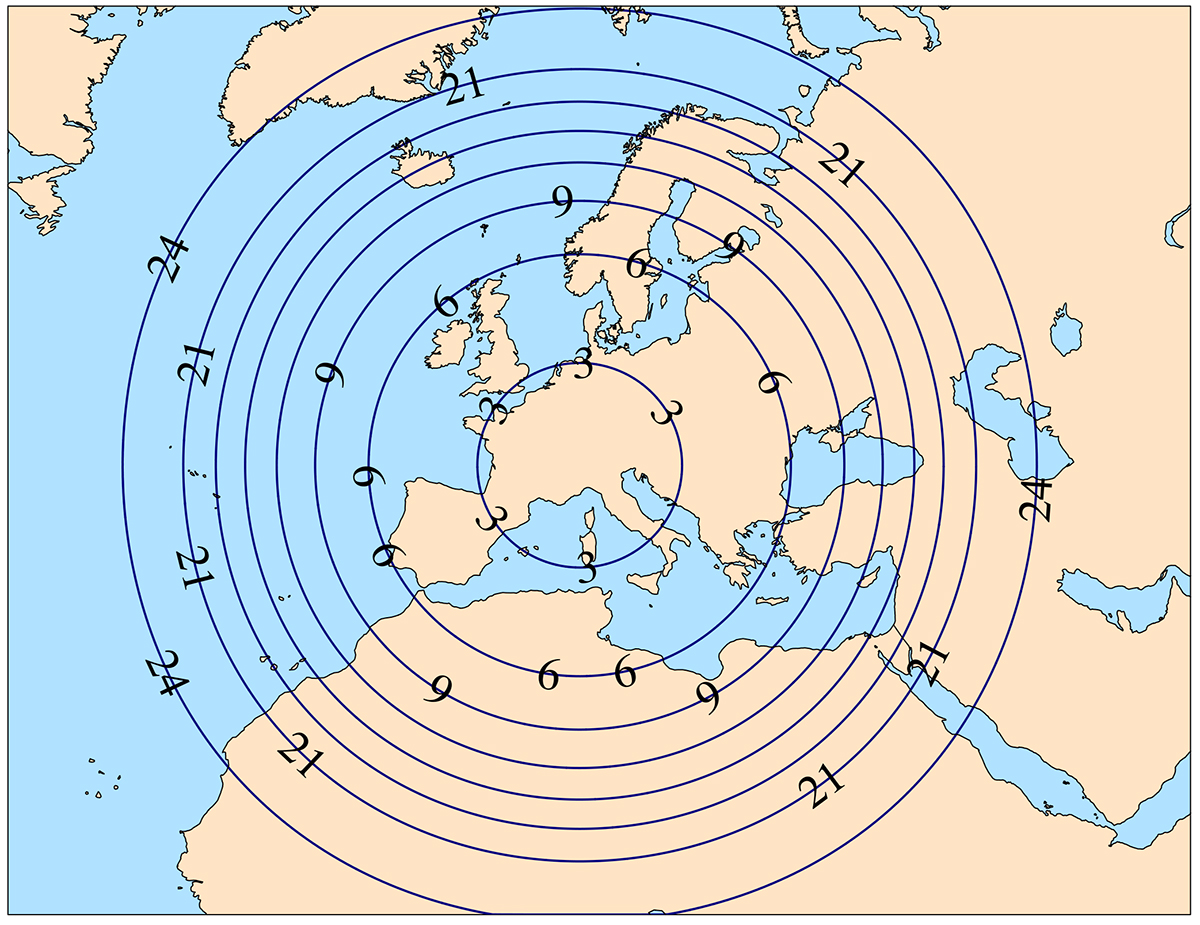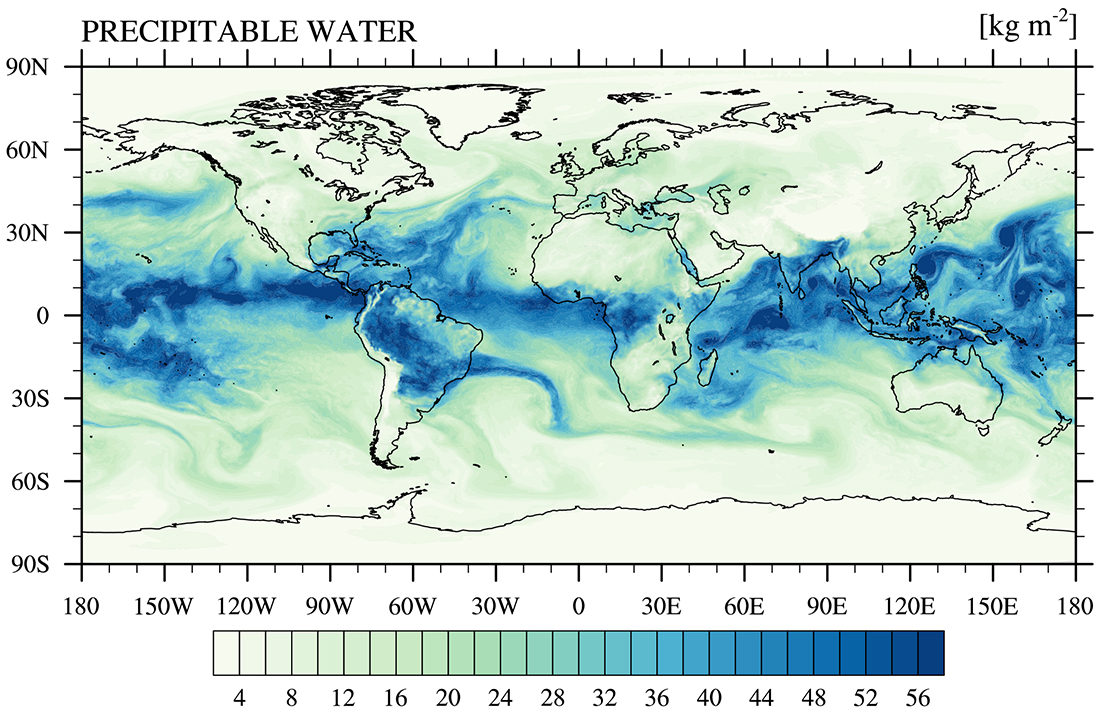ENVIRONMENT AND ENERGY
Global, Convection-Permitting Climate Modelling with the Model for Prediction Across Scales in the WCRP CORDEX Flagship Pilot Study
Principal Investigator:
Dominikus Heinzeller
Affiliation:
Karlsruhe Institute of Technology, Institute of Meteorology and Climate Research, Garmisch-Partenkirchen (Germany)
Local Project ID:
hka19
HPC Platform used:
JUQUEEN of JSC
Date published:
Using the Model for Prediction Across Scales (MPAS), four years of climate simulations at convection-permitting resolutions where carried out using a variable 30-3km resolution mesh, transitioning the so-called gray zone of convection around 5-10km. The comprehensive data set generated following the protocol of the CORDEX Flagship Pilot Study (FPS) on convection-permitting climate simulations will allow the CORDEX-FPS community to study the added value of global, variable-resolution simulations down to convective scales over traditional approaches employing regional climate models and/or coarse horizontal resolutions.
Until recently, climate simulations on regional and even more so on global scales suffered from a limited horizonal resolution of 25km to 200km. At such resolutions, important geographic features such as mountain orography and coastlines remain unresolved. Key physical processes in the context of weather and climate modelling fall into the sub-grid scale and have to be parameterized. For example, convective parameterizations in weather and climate models have long been identified as a major weakness in accurately simulating the diurnal cycle of temperature and precipitation, amongst others [1].
A recently launched project under the auspices of the World Climate Research Program’s (WCRP) Coordinated Regional Downscaling Experiments Flagship Pilot Studies program (CORDEX-FPS) aims at better quantifying the added value of convection-permitting climate simulations using an ensemble of climate models with a horizontal resolution below 4km. Following a common protocol, initial evaluation runs and future climate simulations will be conducted [2]. Due to the considerable computational costs associated with these simulations, all except one of the contributors are employing regional models that rely on boundary conditions from coarse-resolution global models. This approach is known to introduce numerical artifacts and physical inconsistencies [3,4].

Figure 1. Irregular Voronoi mesh employed by MPAS.
Copyright: W. SkamarockThe here-presented project differs from this approach as it uses the global Model for Prediction Across Scales (MPAS). MPAS is a next-generation numerical model for simulating climate and weather on global to regional scales [5]. Based on an irregular Voronoi mesh (see Figure 1), it allows global simulations with areas of different horizontal resolution and smooth transitions between them. This approach offers greater flexibility, improved accuracy and better scalability on modern HPC platforms, while maintaining consistency of large-scale features at a moderate increase in computational costs [3,6,7]. Within this project, convection-permitting climate simulations were conducted for the Mediterranean region displayed in Figure 2 using a 30-3km variable resolution mesh. A total of four years (1999-2002) was simulated, which produced about 30TB of raw output data and 2.6TB of final, post-processed data in a standardized netCDF format. Three additional testcase simulations were conducted in short-term weather forecasting mode, as demanded by the CORDEX-FPS protocol, that covered a summertime extreme precipitation event over Austria, a fall Foehn event over Switzerland and an intensively documented rainfall event along the Mediterranean coast [2].

Figure 2. Variable-resolution 30-3km mesh centered over the Mediterranean study region employed in this project.
Copyright: KIT, IMK-IFUAs the only global model participating in this CORDEX-FPS, this data is a valuable source for the CORDEX-FPS community to study the added value of global climate simulations and compare the results to an ensemble of regional models on an unprecedented long basis of four simulated years.

Figure 3. Precipitable water vapor towards the end of the four-year simulation (2002-12-01) on the 30-3km variable-resolution mesh.
Copyright: KIT, IMK-IFUReferences:
[1] Prein A. F. and 14 co-authors, A review on regional convection‐permitting climate modeling: Demonstrations, prospects, and challenges, Reviews of Geophysics, 53(2), 323–361, 2015; DOI 10.1002/2014RG000475
[2] Coppola E. and 54 co-authors, A first-of-its-kind multi-model convection permitting ensemble for investigating convective phenomena over Europe and the Mediterranean, Climate Dynamics, in review, 2018
[3] Heinzeller D., Duda M.G., Kunstmann H., Towards convection-resolving, global atmospheric simulations with the Model for Prediction Across Scales (MPAS) v3.1: an extreme scaling experiment, Geosci. Model Dev., 9, 77–110, 2016; DOI 10.5194/gmd-9-77-2016
[4] Park S.-H., Klemp J.B., Skamarock W.C., A Comparison of Mesh Refinement in the Global MPAS-A and WRF Models Using an Idealized Normal-Mode Baroclinic Wave Simulation, Mon. Wea. Rev., 142, 3614-3634, 2014; DOI 10.1175/MWR-D-14-00004.1
[5] Skamarock W.C., Klemp J.B., Duda M.G., Fowler L.D., Park S., Ringler T.D., A Multiscale Nonhydrostatic Atmospheric Model Using Centroidal Voronoi Tesselations and C-Grid Staggering, Mon. Wea. Rev., 140, 3090–3105, 2012; DOI 10.1175/MWR-D-11-00215.1
[6] Kramer M., Heinzeller D., Hartmann H., van den Berg W., Steeneveld G.-J., Numerical Weather Prediction in the grey zone using a global variable resolution mesh and scale-aware convection parameterisation, Climate Dynamics, special issue on Advances in Convection-Permitting Climate Modelling, in review, 2018
[7] Judt, F., Insights into Atmospheric Predictability through Global Convection-Permitting Model Simulations, J. Atmos. Sci., 75, 1477–1497, 2018; DOI 10.1175/JAS-D-17-0343.1
Scientific Contact:
Dr. Dominikus Heinzeller
University of Colorado Boulder, Cooperative Institute for Research in Environmental Sciences
NOAA/OAR/ESRL/GSD
Boulder, CO, USA
Previously: Karlsruhe Institute of Technology (KIT), Institute of Meteorology and Climate Research (IMK-IFU), Garmisch-Partenkirchen, (Germany)
e-mail: dom.heinzeller [@] noaa.gov